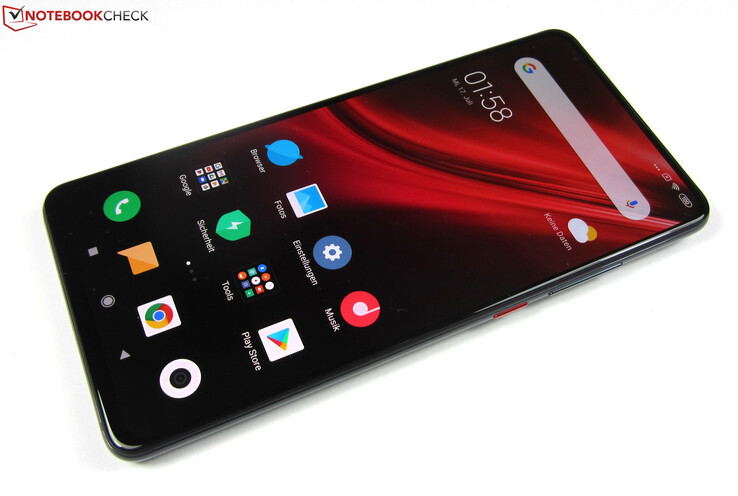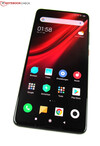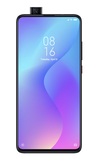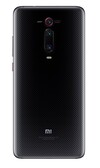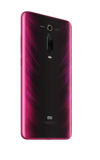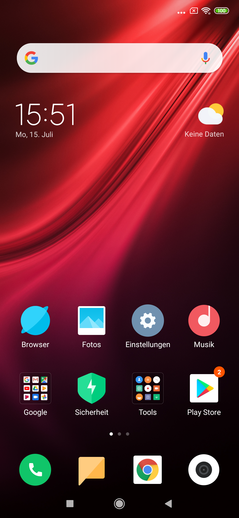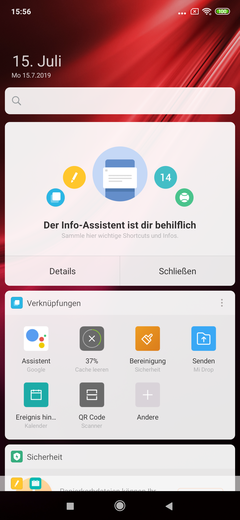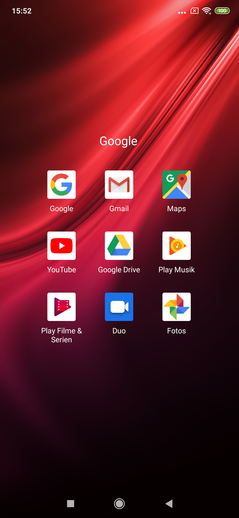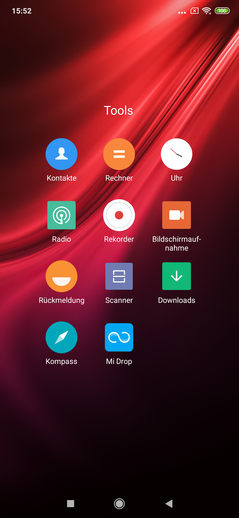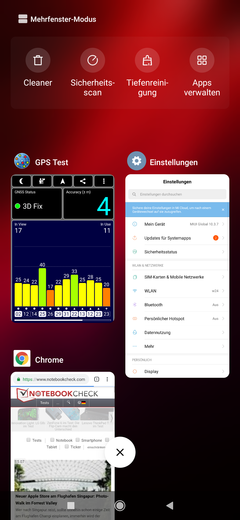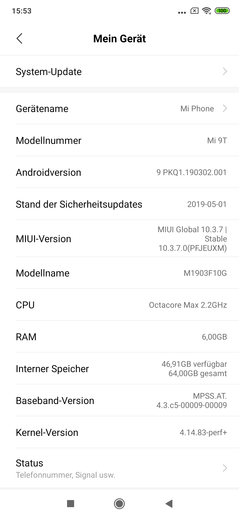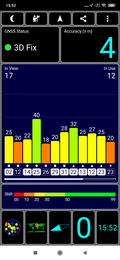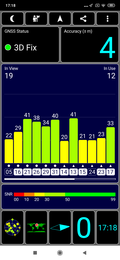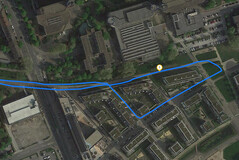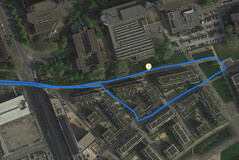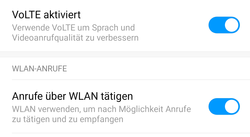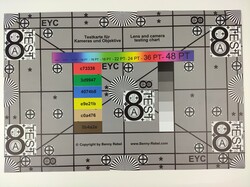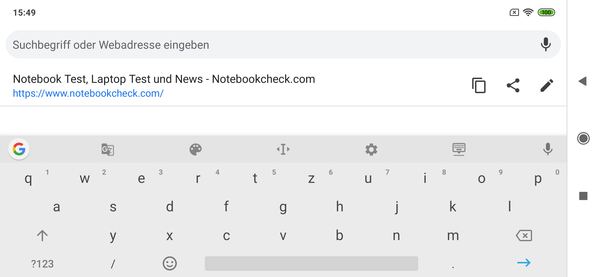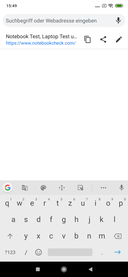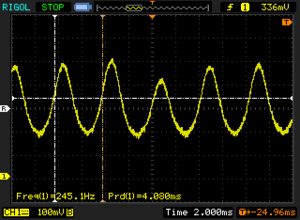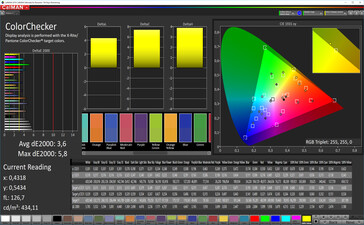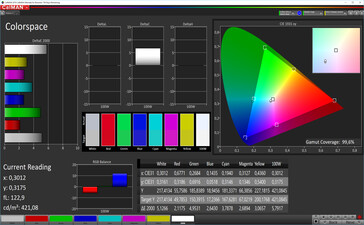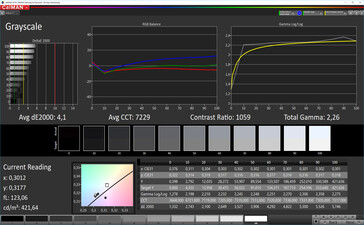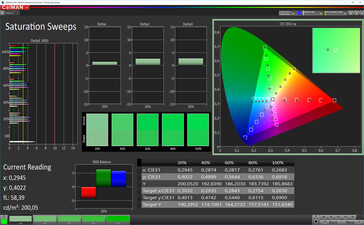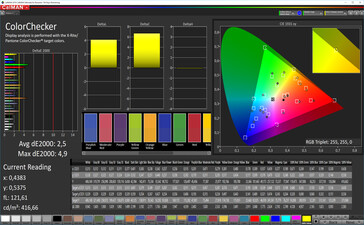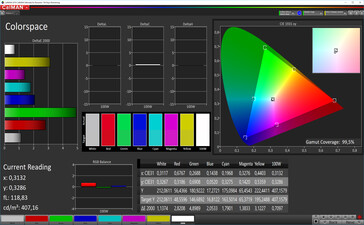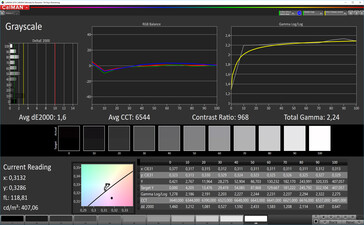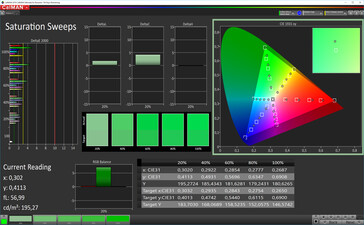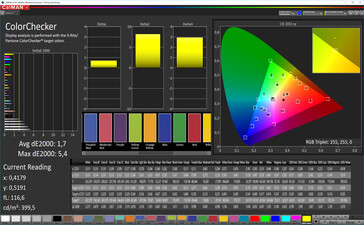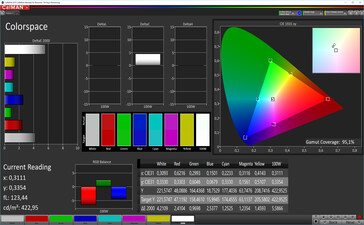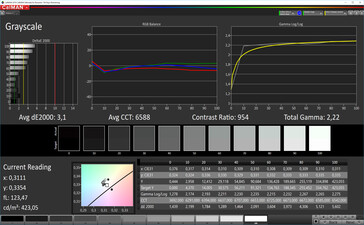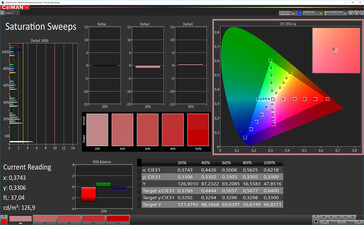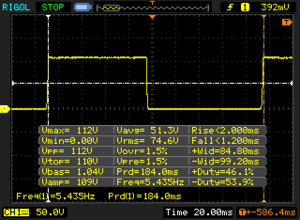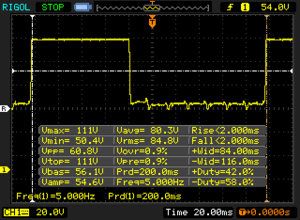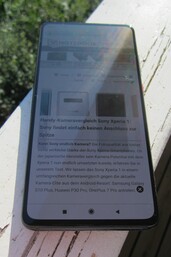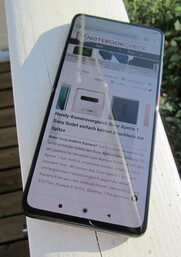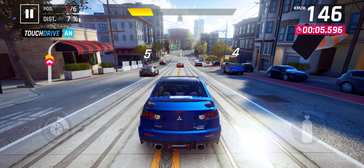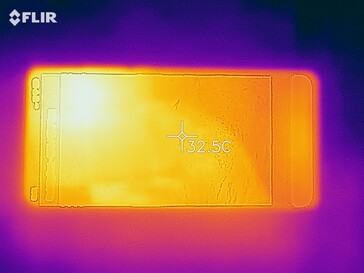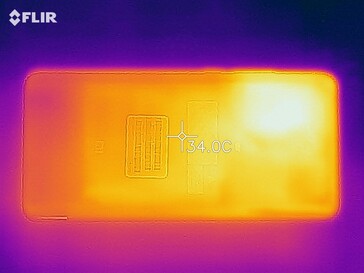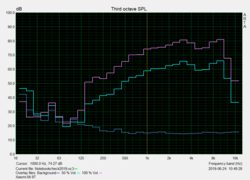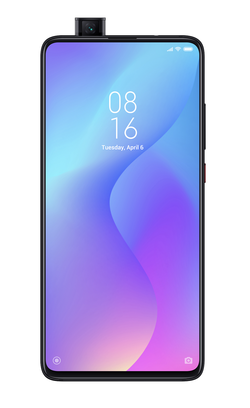Xiaomi Mi 9T Smartphone Review: A midranger with record battery life

Only a few months have passed since the release of the Mi 9 and its midrange offshoot the Mi 9 SE, but Xiaomi has another Mi 9 device up its sleeve. Say hello to the Mi 9T, which it sells as the Redmi K20 outside of Europe.
The Mi 9T comes with either 64 GB or 128 GB of UFS 2.0 flash storage, costing 380 Euros (~US$426) and 410 Euros (~US$460), respectively. These prices put the Mi 9T squarely between the Mi 9 SE and Mi 9, although the 64 GB model of the latter costs 69 Euros (~US$77) more than the corresponding Mi 9T model. Hence, the differences in price between the three devices are rather slim. The Mi 9T should also sit between its Mi 9 siblings in synthetic benchmarks and games with its Snapdragon 730 SoC.
Xiaomi has equipped the Mi 9T with a 6.39-inch AMOLED display, which is the same size as the one in the Mi 9 and just under 0.5-inches larger than the display in the Mi 9 SE. The Mi 9T is notchless though, distinguishing it from its Mi 9 siblings somewhat.
We shall compare the Mi 9T against the Mi 9 and Mi 9 SE, along with several comparably priced midrange smartphones. Our comparison devices will include the Huawei P30 Lite, Motorola Moto G7 Plus, Samsung Galaxy A50 and Sony Xperia 10.
Case
The Mi 9T feels just as premium as its Mi 9 series counterparts, with Xiaomi opting for a metal frame, a flat display and a rounded glass back. The latter has a glossy finish that picks up fingerprints easily though, although this will not be an issue if you plan to keep the device in a case. Xiaomi includes one in the box, which is a nice touch. The case sits flush with the rear-facing cameras too, preventing our review unit from rocking about on a flat surface like a table.
Our review unit is comparatively heavy and thick, but it feels well-built. One of the talking points about the Mi 9T is its notchless display, which Xiaomi has achieved by incorporating a motorised pop-up front-facing camera. The Mi 9T has an in-screen fingerprint scanner too.
Xiaomi currently sells the Mi 9T in three colours. Our review unit is the Carbon Black version, which has a carbon finish as the name suggests. We have included photos of the Glacier Blue and Flame Red versions in the photo gallery below. All models have red power buttons, while the blue and red versions have the same flame finish.
Connectivity
Xiaomi equips the Mi 9T with 6 GB of LPDDR4X RAM and either 64 GB or 128 GB of UFS 2.0 flash storage. Our review unit is the 64 GB model, of which about 52 GB is free. Sadly, the Mi 9T does not support expandable storage, putting it in good company with the Mi 9 and Mi 9 SE.
However, the Mi 9T is DRM Widevine Level 1-certified, unlike the Mi 9 SE, meaning that it can stream DRM-protected content in HD from streaming services like Amazon Prime Video and Netflix. The device has a 3.5 mm headphone jack too and facial authentication thanks to its front-facing camera, the former of which the Mi 9 and Mi 9 SE lack.
It is not all good news though, with Xiaomi cost-cutting in some places. The Mi 9T has no infrared (IR) transmitter, while its Type-C port operates at the slower USB 2.0 standard. The device still supports USB On-The-Go (OTG) though, meaning that you can connect external peripherals like keyboards and mice with the appropriate adapter.
Software
The Mi 9T ships with MIUI 10, a heavily customised version of Android 9.0 Pie. MIUI looks and feels more like stock Android than previous versions, but it still may take some getting used to, with the default launcher lacking an app drawer. Xiaomi includes different gesture controls and a redesigned Recents pane, the latter of which we have included in the screenshots below.
Our review unit comes with MIUI 10 Global, a multilingual ROM that comes with Google services and the Google Play Store. These are missing from the Chinese version, but there are guides online about how to install these should you wish to save some money and buy the Chinese version instead.
Communication & GPS
The Global version supports all important LTE bands, including the increasingly more frequently used bands 20 and 28. Xiaomi does not provide any information on LTE speeds that the Mi 9T should achieve, but Qualcomm claims that the Snapdragon 730 can reach up to 800 Mb/s download and 150 Mb/s upload speeds.
The Mi 9T also supports other modern communications standards including Bluetooth 5.0 and NFC, along with high definition audio codecs like aptX, aptX HD and LDAC. Moreover, the device utilises up to IEEE 802.11ac, allowing it to connect to 2.4 GHz and 5 GHz Wi-Fi networks.
Xiaomi claims that the Mi 9T supports MU-MIMO, with our review unit averaging a respectable 333 Mb/s in iperf3 Client (receive) and 293 Mb/s (transmit). These results put the Mi 9T in line with our comparison devices when tested with our Linksys EA8500 reference router, but it falls well short of the Mi 9, which averaged over 500 Mb/s in both iperf3 tests.
While Wi-Fi transfer speeds fluctuated by up to 180 Mb/s in the iperf3 Client (transmit) test, our review unit maintained between 297 Mb/s and 343 Mb/s in the receive test. Overall, you will only notice these fluctuations if you have an ultra-fast Wi-Fi connection.
| Networking | |
| iperf3 transmit AX12 | |
| Xiaomi Mi 9T | |
| Motorola Moto G7 Plus | |
| Xiaomi Mi 9 SE | |
| Samsung Galaxy A50 | |
| Sony Xperia 10 | |
| Huawei P30 Lite | |
| iperf3 receive AX12 | |
| Sony Xperia 10 | |
| Xiaomi Mi 9T | |
| Motorola Moto G7 Plus | |
| Xiaomi Mi 9 SE | |
| Samsung Galaxy A50 | |
| Huawei P30 Lite | |
The Mi 9T uses BeiDou, Galileo, GLONASS and GPS for locations services. Our review unit achieves a satellite fix with up to four metres accuracy wherever we tested it, a feat that not all midrange smartphones can achieve.
We also took the Mi 9T on a short bike ride to test its location accuracy against our reference bike computer, the Garmin Edge 500. The Mi 9T performed well, deviating only by 20 m from the route that the Garmin plotted. The latter proved more precise in trickier sections, like when we cycled around a lake, but overall the Mi 9T would make a good navigation companion when cycling, swimming, running or walking.
Telephone Features & Call Quality
The Mi 9T is a dual-SIM device with two nano-SIM card slots. The handset can connect to two 4G networks simultaneously and supports dual voice over LTE (VoLTE) and Wi-Fi calling (VoWiFi). However, the Mi 9T must be provisioned by your carrier before the latter two technologies will work; the device cannot utilise VoLTE and VoWiFi on any network even if that network supports those technologies.
Our review unit has decent call quality, with the earpiece reproducing our call partner’s voice clearly. We experienced no dropouts or disturbances during our call tests, while the microphones picked out our voice well too.
Cameras
The Mi 9T has three rear-facing cameras, the main one of which is a 48 MP Sony IMX582 sensor. The IMX582 uses 4-in-1 pixel binning and has an f/1.75 aperture along with a 1.6 μm pixel size. By contrast, Xiaomi equips the Mi 9 and Mi 9 SE with the Sony IMX586 sensor.
The Mi 9T also has an 8 MP telephoto lens with a 1.12 μm pixel size, an f/2.4 aperture and a 13 MP ultra-wide-angle lens with the same pixel size and aperture. Xiaomi has included a 20 MP front-facing sensor too, which has a 0.8 μm pixel size and an f/2.2 aperture. Please see our Mi 9, Mi 9 SE and Mi Mix 3 camera comparison article for a detailed look at the cameras that Xiaomi has been using in its Mi series.
In principle, the Mi 9T exhibits the same strengths and weaknesses as its Mi 9 series counterparts. Our review unit takes excellent and detailed photos in daylight, as demonstrated in scenes 1 and 2. Our test shots in this lighting also have high dynamic range and vivid colours. Night shots are its Achilles heel, with our test shot looking a little noisier and more blurred than the ones taken with the Mi 9 and Mi 9 SE.
The 20 MP front-facing camera does a good job too, producing sharp-looking selfies. The camera app supports bokeh effects and can apply beautification effects along with various other filters. The 20 MP sensor can also record videos in up to 1080p at 30 FPS, while the Sony IMX582 can shoot in up to 4K at 30 FPS.
We also subjected our review unit to further camera tests under controlled lighting conditions. The Mi 9T captures colours vividly, albeit not necessarily precisely, as demonstrated by the ColorChecker Passport montage below. Our review unit does a good job at capturing our test chart too, although contrast levels drop off noticeably in the lower corners of the photo.
Accessories & Warranty
Xiaomi includes an 18 W (5 V/3 A, 9 V/2 A, 12 V/1.5 A) charger in the box, a USB Type-C cable, a protective cover and a SIM tool, along with a quick-start guide and a warranty information leaflet. Xiaomi does not sell any Mi 9T specific accessories currently.
The Mi 9T comes with a 12-month limited manufacturer’s warranty, which Xiaomi reduces to just six months for the charger. Please see our Guarantees, Return Policies & Warranties FAQ for country-specific information.
Input Devices & Operation
The Mi 9T uses onscreen navigation buttons as most modern Android smartphones do, but you can mirror their placement or switch to gesture control if you prefer. There is also a one-handed mode, a shortcut for activating the camera app, and you can activate Google Assistant by long pressing the power button.
The device has a 10-point multitouch touchscreen, which reproduces our inputs precisely and quickly. The same applies to the in-screen fingerprint sensor, and the 2D facial unlocking system. The latter uses the front-facing camera for authenticating a face, which takes a moment to pop-up. In short, using a fingerprint, password, pattern or PIN is faster than using face unlock.
Display
The Mi 9T has the same 6.39-inch AMOLED panel as the Mi 9, albeit without a notch. The display operates natively at 2340x1080 in a 19.5:9 aspect ratio, resulting in a pixel density of 403 PPI. Xiaomi distinguishes the two devices by protecting the Mi 9T with Gorilla Glass 5 as it does with the Mi 9 SE, while it affords the Mi 9 the more scratch-resistant Gorilla Glass 6.
Our review unit gets just as bright as the Mi 9 though, with it reaching an average maximum brightness of 588.9 cd/m² according to X-Rite i1Pro 2. The display is also 96% evenly lit, meaning that you should not notice any bright spots when looking at images with large areas of homogenous colours. Incidentally, only the Galaxy A50 gets brighter than the Mi 9T of our comparison devices in X-Rite i1Pro 2.
The Mi 9T achieved up to 803 cd/m² in the more practical APL50, although this drops to 422 cd/m² with the brightness sensor deactivated. The display also gets as dim as 2.68 cd/m², which should be low enough to not cause eye strain or headaches when looking at the display at night. Unfortunately, the display flickers at between 122 and 245.1 Hz, which could cause health issues for those who are PWM sensitive.
| |||||||||||||||||||||||||
Brightness Distribution: 96 %
Center on Battery: 589 cd/m²
Contrast: ∞:1 (Black: 0 cd/m²)
ΔE ColorChecker Calman: 2.5 | ∀{0.5-29.43 Ø4.77}
ΔE Greyscale Calman: 1.6 | ∀{0.09-98 Ø5}
95.1% sRGB (Calman 2D)
Gamma: 2.24
CCT: 6544 K
| Xiaomi Mi 9T AMOLED, 2340x1080, 6.4" | Xiaomi Mi 9 SE AMOLED, 2340x1080, 6" | Xiaomi Mi 9 AMOLED, 2340x1080, 6.4" | Huawei P30 Lite IPS LCD, 2312x1080, 6.2" | Motorola Moto G7 Plus IPS, 2270x1080, 6.2" | Samsung Galaxy A50 AMOLED, 2340x1080, 6.4" | Sony Xperia 10 IPS-LCD, 2520x1080, 6" | |
|---|---|---|---|---|---|---|---|
| Screen | -3% | 21% | -10% | -105% | -23% | -66% | |
| Brightness middle (cd/m²) | 589 | 583 -1% | 593 1% | 451 -23% | 537 -9% | 644 9% | 547 -7% |
| Brightness (cd/m²) | 589 | 577 -2% | 587 0% | 430 -27% | 525 -11% | 628 7% | 525 -11% |
| Brightness Distribution (%) | 96 | 97 1% | 94 -2% | 90 -6% | 85 -11% | 91 -5% | 93 -3% |
| Black Level * (cd/m²) | 0.55 | 0.58 | 0.36 | ||||
| Colorchecker dE 2000 * | 2.5 | 1.6 36% | 0.9 64% | 1.4 44% | 6.41 -156% | 2.64 -6% | 4.6 -84% |
| Colorchecker dE 2000 max. * | 4.9 | 3.9 20% | 2 59% | 4.4 10% | 10.86 -122% | 9.23 -88% | 12.1 -147% |
| Greyscale dE 2000 * | 1.6 | 2.7 -69% | 1.5 6% | 2.5 -56% | 6.7 -319% | 2.5 -56% | 3.9 -144% |
| Gamma | 2.24 98% | 2.27 97% | 2.27 97% | 2.22 99% | 2.099 105% | 2.024 109% | 2.17 101% |
| CCT | 6544 99% | 6267 104% | 6548 99% | 6422 101% | 8310 78% | 6649 98% | 7158 91% |
| Contrast (:1) | 820 | 926 | 1519 |
* ... smaller is better
Screen Flickering / PWM (Pulse-Width Modulation)
| Screen flickering / PWM detected | 245.1 Hz | ≤ 99 % brightness setting | |
The display backlight flickers at 245.1 Hz (worst case, e.g., utilizing PWM) Flickering detected at a brightness setting of 99 % and below. There should be no flickering or PWM above this brightness setting. The frequency of 245.1 Hz is relatively low, so sensitive users will likely notice flickering and experience eyestrain at the stated brightness setting and below. In comparison: 53 % of all tested devices do not use PWM to dim the display. If PWM was detected, an average of 8083 (minimum: 5 - maximum: 343500) Hz was measured. | |||
AMOLED panels typically produce pure blacks because they can switch off pixels individually, as the display in the Mi 9T can. Blacks look rich and help the display achieve a theoretically infinite contrast ratio, which makes colours look sharper than they do on devices with IPS panels like the P30 Lite or Moto G7 Plus. Xiaomi has included three colour contrast options, which it calls Automatic, Enhanced and Standard. The Mi 9T is set to automatic contrast by default, which allows you to also adjust the display colour temperature. MIUI 10 has a freely selectable colour wheel, along with presets labelled Standard, Warm and Cold.
The display is most colour accurate when set to automatic contrast and the warm colour temperature preset, the combination of which yields practically ideal DeltaE colour deviations. Additionally, the display has a colour temperature of 6,544 K at these settings, which is just 44 K higher than ideal. The other presets are not as colour accurate, but we doubt that most people would notice the difference in daily use.
Display Response Times
| ↔ Response Time Black to White | ||
|---|---|---|
| 3.2 ms ... rise ↗ and fall ↘ combined | ↗ 2 ms rise | |
| ↘ 1.2 ms fall | ||
| The screen shows very fast response rates in our tests and should be very well suited for fast-paced gaming. In comparison, all tested devices range from 0.1 (minimum) to 240 (maximum) ms. » 14 % of all devices are better. This means that the measured response time is better than the average of all tested devices (20.2 ms). | ||
| ↔ Response Time 50% Grey to 80% Grey | ||
| 4 ms ... rise ↗ and fall ↘ combined | ↗ 2 ms rise | |
| ↘ 2 ms fall | ||
| The screen shows very fast response rates in our tests and should be very well suited for fast-paced gaming. In comparison, all tested devices range from 0.165 (minimum) to 636 (maximum) ms. » 14 % of all devices are better. This means that the measured response time is better than the average of all tested devices (31.6 ms). | ||
The Mi 9T remains usable even under direct sunlight thanks to its bright AMOLED panel. The display has a highly reflective finish that catches the summer sun, but we had no issues with using our review unit outside during our tests.
The AMOLED panel has stable viewing angles too, as demonstrated by the montage below. We noticed no brightness, colour or image distortions even at acute viewing angles, meaning that the Mi 9T should remain readable from practically any angle.
Performance
Xiaomi has equipped the Mi 9T with a Qualcomm Snapdragon 730 SoC, an ARMv8-based midrange chipset that integrates two ARM Cortex-A76 cores and six ARM Cortex-A55 cores that can clock up to 2.2 GHz and 1.8 GHz, respectively. The SoC also has a Qualcomm Adreno 618 GPU onboard, which theoretically offers a minor performance boost over the Adreno 616 in the Snapdragon 712, an SoC that Xiaomi uses in the Mi 9 SE.
The Snapdragon 730 performs comparatively well in synthetic benchmarks, beating out all our comparison devices bar the Mi 9. Overall, the Mi 9T sits atop of its class on performance.
However, the Mi 9T is still much closer to the Mi 9 SE in synthetic benchmarks than it is to the Mi 9. The latter flattens our review unit in some benchmarks like AnTuTu v7, where it enjoys a 78% advantage over the Mi 9T. There's no surprise that a Snapdragon 855-powered device trumps one with a Snapdragon 730, but there is less than 100 Euros (~US$112) between the Mi 9T and Mi 9. Depending on how you look at it, this either makes the former comparatively expensive or the latter excellent value for money.
| Basemark GPU 1.1 | |
| 1920x1080 Vulkan Medium Offscreen (sort by value) | |
| Xiaomi Mi 9T | |
| Xiaomi Mi 9 SE | |
| Samsung Galaxy A50 | |
| Xiaomi Mi 9 | |
| Average Qualcomm Snapdragon 730 (n=1) | |
| Vulkan Medium Native (sort by value) | |
| Xiaomi Mi 9T | |
| Xiaomi Mi 9 SE | |
| Samsung Galaxy A50 | |
| Xiaomi Mi 9 | |
| Average Qualcomm Snapdragon 730 (n=1) | |
| 1920x1080 OpenGL Medium Offscreen (sort by value) | |
| Xiaomi Mi 9T | |
| Xiaomi Mi 9 SE | |
| Samsung Galaxy A50 | |
| Xiaomi Mi 9 | |
| Average Qualcomm Snapdragon 730 (n=1) | |
| AnTuTu v7 - Total Score (sort by value) | |
| Xiaomi Mi 9T | |
| Xiaomi Mi 9 SE | |
| Huawei P30 Lite | |
| Motorola Moto G7 Plus | |
| Samsung Galaxy A50 | |
| Sony Xperia 10 | |
| Xiaomi Mi 9 | |
| Average Qualcomm Snapdragon 730 (202586 - 210836, n=2) | |
| VRMark - Amber Room (sort by value) | |
| Xiaomi Mi 9T | |
| Xiaomi Mi 9 SE | |
| Samsung Galaxy A50 | |
| Xiaomi Mi 9 | |
| Average Qualcomm Snapdragon 730 (n=1) | |
| Basemark ES 3.1 / Metal - offscreen Overall Score (sort by value) | |
| Xiaomi Mi 9T | |
| Xiaomi Mi 9 SE | |
| Samsung Galaxy A50 | |
| Xiaomi Mi 9 | |
| Average Qualcomm Snapdragon 730 (n=1) | |
| Average of class Smartphone (205 - 7731, n=34, last 2 years) | |
The Mi 9T finishes second to the Mi 9 in all the browser benchmarks we ran, with our other comparison devices often being a way behind our review unit. We experienced no issues when browsing the web with the preinstalled Chrome 75 browser too.
| Jetstream 2 - 2.0 Total Score | |
| Average of class Smartphone (23.8 - 387, n=148, last 2 years) | |
| Xiaomi Mi 9 (Chrome 73) | |
| Xiaomi Mi 9T (Chrome 75.0.3770.101) | |
| Average Qualcomm Snapdragon 730 (36.6 - 50.1, n=4) | |
| Xiaomi Mi 9 SE (Chrome 73) | |
| Huawei P30 Lite (Chrome 74) | |
| Sony Xperia 10 (Chrome Version 73) | |
| Speedometer 2.0 - Result 2.0 | |
| Average of class Smartphone (15.2 - 643, n=120, last 2 years) | |
| Xiaomi Mi 9 (Chrome 73.0.3683.75) | |
| Xiaomi Mi 9T (Chrome 75.0.3770.101) | |
| Average Qualcomm Snapdragon 730 (32.8 - 46.5, n=4) | |
| Xiaomi Mi 9 SE (Chrome 73) | |
| Samsung Galaxy A50 (Chome 73) | |
| Huawei P30 Lite (Chrome 74) | |
| WebXPRT 3 - Overall | |
| Average of class Smartphone (38 - 380, n=30, last 2 years) | |
| Xiaomi Mi 9 (Chrome 73.0.3683.75) | |
| Xiaomi Mi 9T (Chrome 75.0.3770.101) | |
| Average Qualcomm Snapdragon 730 (60 - 86, n=4) | |
| Xiaomi Mi 9 SE (Chrome 73) | |
| Huawei P30 Lite (Chrome 74) | |
| Samsung Galaxy A50 (Chrome 73) | |
| Motorola Moto G7 Plus | |
| Sony Xperia 10 (Chrome Version 73) | |
| Octane V2 - Total Score | |
| Average of class Smartphone (2228 - 126661, n=195, last 2 years) | |
| Xiaomi Mi 9 (Chrome 73.0.3683.75) | |
| Xiaomi Mi 9T (Chrome 75.0.3770.101) | |
| Average Qualcomm Snapdragon 730 (12771 - 17501, n=4) | |
| Xiaomi Mi 9 SE (Chrome 73) | |
| Samsung Galaxy A50 (Chrome 73) | |
| Huawei P30 Lite (Chrome 74) | |
| Motorola Moto G7 Plus | |
| Sony Xperia 10 (Chrome Version 73) | |
| Mozilla Kraken 1.1 - Total | |
| Sony Xperia 10 (Chrome Version 73) | |
| Motorola Moto G7 Plus | |
| Huawei P30 Lite (Chrome 74) | |
| Samsung Galaxy A50 (Chrome 73) | |
| Average Qualcomm Snapdragon 730 (2564 - 3436, n=4) | |
| Xiaomi Mi 9 SE (Chrome 73) | |
| Xiaomi Mi 9T (Chrome 75.0.3770.101) | |
| Xiaomi Mi 9 (Chrome 73.0.3683.75) | |
| Average of class Smartphone (257 - 28190, n=155, last 2 years) | |
* ... smaller is better
Xiaomi equips the Mi 9T with UFS 2.0 flash storage, which remains a rarity for midrange smartphones. Most come with slower eMMC 5.1 storage, which our comparison table below demonstrates with the Mi 9T outperforming all but the Mi 9 in AndroBench. Overall, the Mi 9T has high-speed storage by current midrange standards.
| Xiaomi Mi 9T | Xiaomi Mi 9 SE | Huawei P30 Lite | Motorola Moto G7 Plus | Samsung Galaxy A50 | Sony Xperia 10 | Xiaomi Mi 9 | Average 64 GB UFS 2.0 Flash | Average of class Smartphone | |
|---|---|---|---|---|---|---|---|---|---|
| AndroBench 3-5 | -21% | -29% | -25% | -24% | -40% | 55% | -8% | 414% | |
| Sequential Read 256KB (MB/s) | 492.7 | 492.5 0% | 293.2 -40% | 283.6 -42% | 507 3% | 273.8 -44% | 666 35% | 513 ? 4% | 2240 ? 355% |
| Sequential Write 256KB (MB/s) | 179.2 | 190.1 6% | 158.6 -11% | 208.7 16% | 192.1 7% | 232.9 30% | 388.3 117% | 175.2 ? -2% | 1877 ? 947% |
| Random Read 4KB (MB/s) | 128.6 | 115.8 -10% | 71.6 -44% | 76.6 -40% | 98.9 -23% | 53.1 -59% | 149.4 16% | 117.1 ? -9% | 298 ? 132% |
| Random Write 4KB (MB/s) | 107.8 | 21.86 -80% | 87.3 -19% | 73.1 -32% | 18.2 -83% | 14.39 -87% | 165.3 53% | 81.1 ? -25% | 345 ? 220% |
Games
The Adreno 618 is a competent GPU that can handle modern triple-A mobile games at even high graphics settings. The GPU cannot maintain as consistent frame rates as something like the Adreno 640 can, but you should hardly notice this in daily use.
Graphically intensive games like Asphalt 9: Legends average around 28 FPS, while less taxing titles like Arena of Valor and Shadow Fight 3 sit just below 60 FPS. However, frame rates dropped as low as 23 FPS while playing Arena of Valor and our review unit repeatedly refused to install PUBG Mobile for some reason.
Emissions
Temperature
The Mi 9T manages its surface temperatures well, with our review unit peaking at 35.4 °C under sustained load. The back of the device remains slightly cooler though at 34.7 °C, meaning that it should never feel hot in your hands even during prolonged gaming sessions. Conversely, the Mi 9T should feel cool to the touch at idle.
We also subjected our review unit to several GFXBench stress tests to see how it manages its performance under sustained load. The Mi 9T had no issues in either the T-Rex or Manhattan benchmarks, the latter of which generally trips up most modern smartphones. Frame rates remained at a consistent level in both tests even after 30 run-throughs, demonstrating that you should not experience any thermal throttling, even if you push the Mi 9T to its limits.
(+) The maximum temperature on the upper side is 35.4 °C / 96 F, compared to the average of 35.2 °C / 95 F, ranging from 21.9 to 247 °C for the class Smartphone.
(+) The bottom heats up to a maximum of 34.7 °C / 94 F, compared to the average of 34 °C / 93 F
(+) In idle usage, the average temperature for the upper side is 23.8 °C / 75 F, compared to the device average of 32.9 °C / 91 F.
Speakers
The Mi 9T has a mono speaker on the underside of its frame next to its Type-C port. The speaker in our review unit reaches a maximum of 89 dB(A), which is noticeably louder than the one in the Mi 9 SE. The speaker in the Mi 9T cannot reproduce bass frequencies, but it does so linearly with mid and high-pitched ones, making it good enough for occasionally listening to music or watching videos.
However, we would recommend using external audio equipment like headphones and speakers where possible, as these will deliver a better listening experience than the mono speaker will. You can connect either via the 3.5 mm jack or Bluetooth, with the latter supporting audio codecs including AAC, aptX, aptX HD and LDAC.
Xiaomi Mi 9T audio analysis
(+) | speakers can play relatively loud (89 dB)
Bass 100 - 315 Hz
(-) | nearly no bass - on average 28.9% lower than median
(±) | linearity of bass is average (10.6% delta to prev. frequency)
Mids 400 - 2000 Hz
(+) | balanced mids - only 4.2% away from median
(+) | mids are linear (4.2% delta to prev. frequency)
Highs 2 - 16 kHz
(+) | balanced highs - only 3.9% away from median
(+) | highs are linear (4% delta to prev. frequency)
Overall 100 - 16.000 Hz
(±) | linearity of overall sound is average (19.1% difference to median)
Compared to same class
» 24% of all tested devices in this class were better, 9% similar, 67% worse
» The best had a delta of 11%, average was 35%, worst was 134%
Compared to all devices tested
» 45% of all tested devices were better, 7% similar, 48% worse
» The best had a delta of 4%, average was 24%, worst was 134%
Xiaomi Mi 9 SE audio analysis
(±) | speaker loudness is average but good (81.5 dB)
Bass 100 - 315 Hz
(-) | nearly no bass - on average 21.9% lower than median
(±) | linearity of bass is average (12.8% delta to prev. frequency)
Mids 400 - 2000 Hz
(+) | balanced mids - only 2.5% away from median
(+) | mids are linear (4.5% delta to prev. frequency)
Highs 2 - 16 kHz
(+) | balanced highs - only 3.2% away from median
(+) | highs are linear (6.3% delta to prev. frequency)
Overall 100 - 16.000 Hz
(±) | linearity of overall sound is average (18.7% difference to median)
Compared to same class
» 21% of all tested devices in this class were better, 9% similar, 69% worse
» The best had a delta of 11%, average was 35%, worst was 134%
Compared to all devices tested
» 42% of all tested devices were better, 8% similar, 50% worse
» The best had a delta of 4%, average was 24%, worst was 134%
Power Management
Power Consumption
The Mi 9T is a comparatively power-efficient smartphone even by Snapdragon 730 standards. Our review unit averaged 19% lower power consumption than the average of Snapdragon 730-powered devices that we have already reviewed, with the Mi 9T averaging 43% less under load. Our review unit averages just 0.95 W at idle too, putting it well ahead of all our comparison devices. Overall, only the Mi 9 SE comes close to matching the power efficiency of the Mi 9T.
Xiaomi includes an 18 W charger in the box, which supports Qualcomm Quick Charge 4.0. The charger recharges our review unit fully in 1:40 hours.
| Off / Standby | |
| Idle | |
| Load |
|
Key:
min: | |
| Xiaomi Mi 9T 4000 mAh | Xiaomi Mi 9 SE 3070 mAh | Huawei P30 Lite 3340 mAh | Motorola Moto G7 Plus 3000 mAh | Samsung Galaxy A50 4000 mAh | Sony Xperia 10 2870 mAh | Xiaomi Mi 9 3300 mAh | Average Qualcomm Snapdragon 730 | Average of class Smartphone | |
|---|---|---|---|---|---|---|---|---|---|
| Power Consumption | -7% | -91% | -82% | -67% | -57% | -37% | -33% | -85% | |
| Idle Minimum * (Watt) | 0.54 | 0.53 2% | 0.91 -69% | 1.1 -104% | 0.8 -48% | 0.72 -33% | 0.67 -24% | 0.643 ? -19% | 0.847 ? -57% |
| Idle Average * (Watt) | 0.95 | 1.18 -24% | 2.41 -154% | 1.7 -79% | 1.5 -58% | 2.16 -127% | 1.26 -33% | 1.235 ? -30% | 1.446 ? -52% |
| Idle Maximum * (Watt) | 1.08 | 1.2 -11% | 2.43 -125% | 2.1 -94% | 1.7 -57% | 2.17 -101% | 1.29 -19% | 1.448 ? -34% | 1.63 ? -51% |
| Load Average * (Watt) | 2.7 | 3.04 -13% | 4.57 -69% | 5.1 -89% | 5.9 -119% | 3.32 -23% | 3.71 -37% | 4.28 ? -59% | 6.95 ? -157% |
| Load Maximum * (Watt) | 5.4 | 4.83 11% | 7.57 -40% | 7.9 -46% | 8.3 -54% | 5.34 1% | 9.3 -72% | 6.65 ? -23% | 11.3 ? -109% |
* ... smaller is better
Battery Life
The Mi 9T has a 4,000 mAh battery, which is substantially larger than the 3,070 mAh and 3,300 mAh capacities of the Mi 9 SE and Mi 9. Moreover, only the Galaxy A50 matches the Mi 9T in this regard, with the battery capacities of our other comparison devices ranging from 2,870 mAh to 3,340 mAh.
Low power consumption and a large battery equates to exceptional battery life. Our review unit lasted an incredible 16:31 hours in our practical Wi-Fi test, and 20:04 hours with an H.264 encoded video running on a loop. The Mi 9T only finishes second in our comparison table in one test, with the Galaxy A50 lasting a mere 17 minutes longer under sustained load. In short, the Mi 9T should last at least two days between charges.
| Xiaomi Mi 9T 4000 mAh | Xiaomi Mi 9 SE 3070 mAh | Huawei P30 Lite 3340 mAh | Motorola Moto G7 Plus 3000 mAh | Samsung Galaxy A50 4000 mAh | Sony Xperia 10 2870 mAh | Xiaomi Mi 9 3300 mAh | |
|---|---|---|---|---|---|---|---|
| Battery runtime | -32% | -39% | -28% | -19% | -39% | -28% | |
| Reader / Idle (h) | 35.6 | 22.9 -36% | 20.8 -42% | 26.5 -26% | 16.8 -53% | 27.5 -23% | |
| H.264 (h) | 20.1 | 14.2 -29% | 11.4 -43% | 13.5 -33% | 14.5 -28% | 10.3 -49% | 16.8 -16% |
| WiFi v1.3 (h) | 16.5 | 8.5 -48% | 8.6 -48% | 11.9 -28% | 11.7 -29% | 9 -45% | 9.1 -45% |
| Load (h) | 4.3 | 3.6 -16% | 3.3 -23% | 3.3 -23% | 4.6 7% | 3.9 -9% | 3.2 -26% |
Pros
Cons
Verdict
Xiaomi sure brings new smartphones to market quickly. The Mi 9T follows the Mi 9 and Mi 9 SE, the naming scheme of which may make the three devices challenging to distinguish. However, the Mi 9T is more than just a rehashed Mi 9.
The Xiaomi Mi 9T has great battery life, a pop-up selfie camera, a great display and solid performance. Overall, the 9T offers more than most midrange smartphones, while also being hardly any cheaper than the Mi 9.
Firstly, the Mi 9T has a notchless display, with Xiaomi incorporating a motorised pop-up front-facing camera to overcome the notches that the Mi 9 and Mi 9 SE have. The Mi 9T also has a substantially larger battery than its siblings, which gives the device excellent battery life, and a headphone jack, something that both the Mi 9 and Mi 9 SE lack.
The 9T offers more performance than the Mi 9 SE thanks to its Snapdragon 730 SoC, but it cannot match the power of the Snapdragon 855 in the Mi 9. The 9T has the same size display as the Mi 9 though, which is 0.46-inches larger than the one in the Mi 9 SE. All three devices come with 6 GB of RAM though.
One sticking point of the Mi 9T is its price. The 64 GB model is 69 Euros (~US$77) cheaper than the Mi 9, which has better cameras and a more powerful SoC. Then there is the Mi 9T Pro, also sold as the Redmi K20 Pro, which also comes with a Snapdragon 855. In short, the Mi 9T is simultaneously an excellent midrange smartphone and a tough sell for Xiaomi mainly because of the rest of the Mi 9 series.
Xiaomi Mi 9T
- 09/03/2022 v7 (old)
Manuel Masiero


